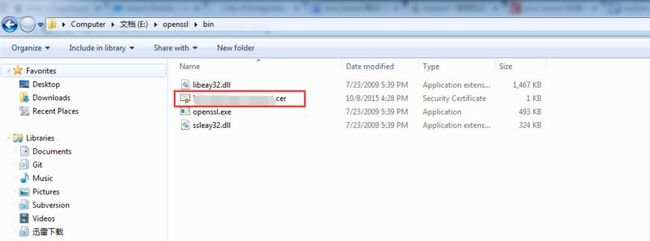- Python 潮流周刊#87:媲美 OpenAI-o1 的开源模型(摘要)
python
本周刊由Python猫出品,精心筛选国内外的250+信息源,为你挑选最值得分享的文章、教程、开源项目、软件工具、播客和视频、热门话题等内容。愿景:帮助所有读者精进Python技术,并增长职业和副业的收入。本期分享了12篇文章,12个开源项目。下周因春节假期停更一周,提前恭祝大家蛇年吉祥,万事顺意!(PS.我在Python猫公众号给大家准备了一些红包封面,免费领取哟~)以下是本期摘要:文章&教程①优
- 云电脑账号共享,云电脑账号共享的作用
在科技的浪潮中,云电脑正以一种不可阻挡的趋势向前发展。它将不断突破传统电脑的局限,为用户带来更加便捷、高效、智能的数字体验。相信在不久的将来,云电脑将走进千家万户,成为人们生活中不可或缺的一部分,开启一个全新的数字时代。今天小编给大家带来分析云电脑账号共享的作用。云电脑账号共享的作用主要体现在以下几个方面:1.提高资源利用率:通过共享云电脑账号,多个用户可以共同使用同一台云主机的计算资源,从而提高
- Alibaba Spring Cloud 十七 Sentinel熔断降级
空灵宫(Ethereal Palace)
AlibabaSpringCloudspringcloudsentinelspring
概述在微服务架构中,熔断与降级是保证系统稳定性的重要机制,能有效防止故障蔓延或雪崩效应。当某个服务出现异常、延迟过高或错误率过高时,触发熔断保护,将该服务“隔离”一段时间,避免影响整体系统的吞吐和可用性。SpringCloudAlibabaSentinel提供了灵活的熔断降级(Degrade)机制,可以根据响应时间(RT)、异常比例或异常数等指标,自动触发熔断并执行相应的降级策略,为业务提供及时的
- http协议中网络请求的响应码是401,代表身份认证失败
Flamingo_huohuo
学习vue得知道这些网络前端
401是什么错误在网络请求和HTTP协议的范畴内,401错误是一种常见的状态码,全称为“401Unauthorized”,下面从含义、产生原因、解决方案、实际应用场景几个方面为你详细介绍。含义401状态码表示客户端在请求需要身份验证的资源时,没有提供有效的身份验证凭证,或者提供的凭证无效,服务器拒绝了该请求。简单来说,就是客户端尝试访问受保护的资源,但没有通过身份验证。产生原因未提供身份验证信息:
- 一、新手学习爬虫第一课 对网站发起请求(基于python语言)
[木子加贝]
python自学爬虫学习爬虫python开发语言后端
目录前言一、安装并引用请求模块requests1.安装请求模块2.引用requests请求模块3.引用requests请求模块并使用别名二、发起请求1.对网站发起get请求(最常用的请求):(1)第一种方法(字符串)(2)第二种方法(变量)(3)第三种方法(关键字传参)2.对网站发起带参数的get请求:3.对网站发起post请求:4.对网站发JSON数据的post请求:4.注意事项总结前言爬虫的本
- 【Python Web开发】Python Web开发知识全解析
萧鼎
python基础到进阶教程python前端开发语言
PythonWeb开发知识全解析Python是一种强大的编程语言,以其简洁和高效而闻名,尤其在Web开发领域,它有着广泛的应用。Python提供了许多功能强大且灵活的Web框架,如Flask、Django、FastAPI等,使得构建现代Web应用变得简单而高效。本文将从PythonWeb开发的基本知识入手,逐步介绍开发流程、核心技术以及如何使用Python框架构建高效、可扩展的Web应用。1.什么
- x86 Docker镜像转换为 ARM 架构镜像
好运-
dockerarm开发架构
Docker是一种流行的容器化技术,可以帮助开发人员在不同的操作系统和硬件平台上运行应用程序。然而,由于不同的硬件架构,例如x86和ARM,Docker镜像在不同的平台上不能直接运行。本文将介绍如何将x86Docker镜像转换为ARM架构,并提供代码示例。目录1.环境配置2.注意事项3.镜像拉取4.x86系统打包镜像1.环境配置docker运行其他平台容器,需要使用--platform参数来指定平
- Ubuntu Server连接wifi
Young4Dream
Linuxubuntulinux运维
背景家里服务器放在客厅太吵了,准备挪到阳台,所以买了TPwifi接收器,因此需要配置wifi连接.刚开始买了TendaAx300,结果不支持服务器系统,买前还是得和客服交流交流.准备驱动安装对于windows系统来说,这款接收器是免驱的,但在linux上需要安装相应型号驱动安装完成后,使用ipa查看网卡情况,一般wl开头的就是我们的主角.配置nmcli命令是配置的主要工具,需要先安装network
- 【Pip】配置和优化 `pip` 安装源:提升 Python 包管理体验的全面指南
丶2136
#pippippython开发语言
目录引言一、什么是`pip`配置文件?1.1配置文件的类型与位置二、配置文件的结构与配置项2.1中英文注释配置文件示例三、详细解析配置项3.1镜像源设置(`index-url`和`extra-index-url`)3.2代理设置(`proxy`)3.3安装选项(`no-deps`和`user`)3.4缓存控制(`no-cache-dir`和`cache-dir`)3.5日志和调试(`verbose
- 【学习笔记】手把手教你使用Autoware标定SICK-2D激光雷达和相机
Masec
学习笔记Autoware标定二维雷达
2019/06/21更新说明:很多小伙伴反应从github上下载的Autoware没有CalibrationToolkit,是作者在github的新源码和我用的版本不一样了。该教程仅针对2018年11月7日的发布版本。网上Autoware的教程不多,而且都是关于多线的威力登雷达和相机的联合标定。自己摸索使用Autoware标定SICKTIM561单线激光雷达和相机的方法,写一个详细的教程,希望可以
- Pytest插件介绍:pytest-django
东汉末年出bug
pytestdjangosqlite
pytest-django简介pytest-django是pytest的一个插件,专为Django应用程序和项目提供了一套有用的测试工具。pytest本身是一个功能强大的测试框架,以其简洁的API和丰富的插件生态而闻名。pytest-django则在此基础上,进一步简化了Django项目的测试流程,使得能够更轻松地编写、运行和管理测试。快速上手安装pytest-django要使用pytest-dj
- Android FFmpeg 实现带滤镜的微信小视频录制功能
攻城狮百里
音视频C/C++C++音视频AndroidFFmpeg
本文将实现对采集的预览帧(添加滤镜)和PCM音频同时编码复用生成一个mp4文件,即实现一个仿微信小视频录制功能。音视频录制编码流程本文采用的是软件编码(CPU)实现,所以针对高分辨率的预览帧时,就需要考虑CPU能不能吃得消,在骁龙8250上使用软件编码分辨率超过1080P的图像就会导致CPU比较吃力,这个时候帧率就跟不上了。音视频录制代码实现Java层视频帧来自AndroidCamera2API回
- 奥比中光Geminipro相机使用
一傲
python开发语言
相机使用入门,使用python获取深度图和颜色图并显示。#安装依赖importcv2importnumpyasnpfrommatplotlibimportpyplotasplt#奥比中光OrbbecPythonSDKfromObTypesimport*fromPropertyimport*importPipelineimportStreamProfilefromErrorimportObExcep
- H3C-交换机telnet远程配置案例
仓鼠OO
网络配置(H3C)H3C网络运维
目录1.telnet简述2.网络拓扑3.实验需求4.配置步骤4.1网络基本配置4.2telnet配置5.telnet测试远程6.小结1.telnet简述Telnet是远程登录服务的一个协议,该协议定义了远程登录用户与服务器交互的方式。它允许用户在一台联网的计算机上登录到一个远程分时系统中,然后像使用自己的计算机一样使用该远程系统。Telnet使用客户-服务器模式进行工作。在用户端,需要启动一个Te
- 一、PyCharm(Professional)搭建Django环境
郝家伙~
pycharmidepythondjango
目录一、创建项目1.左侧选择Django框架2.点击create开始创建项目3.下载Django失败,使用默认源下载可能失败,需要指定其他源,这里使用阿里源4.手动创建项目django-adminstartproject项目名称5.进入当前项目创建应用python3manage.pystartappsign6.点击运行按钮或终端运行项目python3manage.pyrunserverip:端口,
- threejs——无人机概念切割效果
孙华鹏
无人机cocos2d游戏引擎
主要技术采用着色器的切割渲染,和之前写的风车可视化的文章不同,这次的切割效果是在着色器的基础上实现的,并新增了很多可调节的变量,兄弟们,走曲儿~线上演示地址,点击体验源码下载地址,点击下载正文从图中大概可以看出以下信息,一个由线组成的无人机模型,一个由粒子组成的无人机模型,那么这些粒子、线都是从一个无人机的gltf模型中提取出来的,无人机模型由很多个小的Mesh组成的一个大的group,那么为了着
- django项目部署ubuntu服务器,Ubuntu部署Django项目方法详解
weixin_39965075
教程使用的软件版本:Ubuntu18.04.1LTS,django2.0,Python3.6.5、nginx-1.13.7、uWSGI(2.0.17.1),Ubuntu是纯净的,全新的。下面我们开始来部署。如果觉得看文字没意思,想看视频教程的,请点击这里:Django项目部署视频教程一、更新操作系统和安装依赖包#更新操作系统软件库sudoapt-getupdatesudoapt-getupgrad
- onvif协议_大华录像机添加海康摄像头,设置了onvif协议也不行,如何解决?
weixin_39640646
onvif协议onvif协议的摄像头改ip为什么使用3msip2协议
理大华的录像机添加海康摄像头在监控项目中经常会遇到,有很多的项目我们使用并不是同一个厂家的设备。在我们弱电行业网VIP技术2群中也讨论到一个问题,关于大华的录像机添加海康摄像头为什么总是不成功,很多情况下,我们直接的解决方法,是直接使用onvif协议就可以解决,但是并不然,很多朋友在大华的录像机添加海康摄像头,使用了onvif协议也是不能解决的。这个问题不断的有朋友遇到,之前我们也曾讨论过,本期我
- Redis集群的高可用架构及维护
AI天才研究院
Python实战自然语言处理人工智能语言模型编程实践开发语言架构设计
作者:禅与计算机程序设计艺术1.简介2019年,随着云计算、微服务架构和容器技术的流行,NoSQL数据库和缓存技术越来越受到企业应用需求的关注。Redis集群作为一款开源内存键值存储数据库,在高性能、易用性等方面都给予了开发者更高的满意度。但在实际生产环境中运行Redis集群却并不容易,如何保证Redis集群的高可用、可靠性和持久化一直是很多公司关心的问题。本文将从以下两个角度出发,分析Redis
- 云计算的概念与特点:开启数字化时代的新篇章
ivwdcwso
运维云计算
在当今数字化时代,云计算(CloudComputing)已经成为推动技术创新和业务转型的核心力量。无论是大型企业、中小型企业,还是个人用户,云计算都为其提供了高效、灵活和经济的解决方案。本文将深入探讨云计算的概念及其核心特点,帮助读者全面了解这一革命性技术。©ivwdcwso(ID:u012172506)一、云计算的概念云计算是一种基于互联网的计算模式,通过将计算资源(如服务器、存储、网络、数据库
- python模块os和 importlib实战指南
ivwdcwso
开发运维python服务器运维开发devops
os和importlib是Python中两个非常强大的模块,分别用于与操作系统交互和动态导入模块。本文将通过实际代码示例,展示如何在实际项目中使用这两个模块,帮助你更好地理解它们的用途和应用场景。©ivwdcwso(ID:u012172506)1.os模块实战os模块主要用于与操作系统交互,例如读取环境变量、操作文件路径、执行系统命令等。以下是os模块的常见实战场景。1.1读取环境变量在开发中,我
- Django 日志配置实战指南
ivwdcwso
django数据库sqlitepython开发
日志是Django项目中不可或缺的一部分,它帮助我们记录应用程序的运行状态、调试信息、错误信息等。通过合理配置日志,我们可以更好地监控和调试应用程序。本文将详细介绍如何在Django项目中实现日志文件分割、日志级别控制以及多环境日志配置,并结合最佳实践和代码示例,帮助你全面掌握Django日志的使用。1.日志级别概述Python的日志模块定义了以下日志级别(从低到高):DEBUG:详细的调试信息,
- 优雅驾驭 TryParse:技巧与实战全攻略
东百牧码人
c#数据结构
一、引言在编程的世界里,数据类型的转换是我们经常会遇到的操作。而TryParse方法作为一种安全、高效的类型转换方式,在许多编程语言中都有着广泛的应用,比如C#、Java等。它能够帮助我们在将字符串转换为其他数据类型时,避免因格式不正确而引发的异常,使我们的程序更加健壮和稳定。今天,咱们就来聊聊如何优雅地使用TryParse,让你的代码既简洁又高效,展现出编程的艺术之美。二、TryParse基础解
- 跨境电商都爱的AI图片视频翻译工具,究竟是啥
ssk521125
人工智能大数据ai
家人们,做跨境电商的都知道,语言真的是一道大坎!要把咱的商品图文、宣传视频推向全球市场,不懂当地语言可不行。找人工翻译吧,价格贵不说,效率还不高。自己用那些免费的基础翻译软件,翻译出来的内容要么生硬,要么根本不准确,简直没法用。就在大家为这个问题头疼的时候,一款神秘的翻译工具在跨境电商圈里火了起来,好多跨境电商从业者都对它赞不绝口,到底是啥工具这么厉害呢?今天我就给大家好好扒一扒!风车AI翻译官网
- 浏览器中实现3D全景浏览
snawy
three.js全景图WebGL
如果你用过网页版的百度地图,你大概3D全景图浏览是一种怎样的酷炫体验:在一个点可以360度环顾周围的建筑、景色,当然也可以四周移动,就像身临其境。科普全景图共分为三种:①球面全景图利用一张全景图围成一个球,自身位置位于球体内。由于图片是矩形,所以最上和最下的缝合处很明显就能够看得出来。球面全景图是最接近人眼的构建模式,若利用多个立面构建,拼接方法繁琐,性能消耗高。因此,本文介绍的是上述通过一张全景
- django使用踩坑经历
AI航海家(Ethan)
Djangopython后端框架djangosqlite数据库postgresql
DRF使用drf获取序列化后的idvisitor_serializer=VisitorSaveSerializer(data={…})ifvisitor_serializer.is_valid():visitor=visitor_serializer.save()visitor_id=visitor.pkpostgrepsql踩坑django使用postgrepsql,使用聚合函数如:sum等,被
- leetCode热门100题——3.最长连续序列
Bin二叉
leetcode算法数据结构java
目录题目描述分析方法:从最小数开始遍历思路代码时间复杂度题目描述给定一个未排序的整数数组nums,找出数字连续的最长序列(不要求序列元素在原数组中连续)的长度。请你设计并实现时间复杂度为O(n)的算法解决此问题。示例1:输入:nums=[100,4,200,1,3,2]输出:4解释:最长数字连续序列是[1,2,3,4]。它的长度为4。示例2:输入:nums=[0,3,7,2,5,8,4,6,0,1
- Django WSGI 异步处理和多线程的实战指南
penmily
djangopython
1.DjangoWSGI的架构和工作原理Django作为Python编程语言中最受欢迎的web框架之一,其WSGI(WebServerGatewayInterface)支持为应用的扩展性和性能优化提供了基础。本章将介绍DjanogWSGI架构的基本组成,阐述其工作原理,并分析它是如何使得Django应用能够与各种web服务器进行交互的。1.1WSGI架构的组成WSGI是Python的一种协议,定义
- ubuntu20.04安装使用direct_visual_lidar_calibration标定雷达和相机
小负不负
数码相机
官方链接GitHub-koide3/direct_visual_lidar_calibration:Atoolboxfortarget-lessLiDAR-cameracalibration[ROS1/ROS2]官方安装方式Installation-direct_visual_lidar_calibration安装依赖sudoaptinstalllibomp-devlibboost-all-dev
- 改进候鸟优化算法之二:基于混沌映射的候鸟优化算法(MBO-CM)
搏博
算法人工智能r语言开发语言算法策略模式
基于混沌映射的候鸟优化算法(MigratingBirdsOptimizationbasedonChaoticMapping,MBO-CM)是一种结合了混沌映射与候鸟优化算法(MigratingBirdsOptimization,MBO)的优化方法。一、候鸟优化算法(MBO)简介候鸟优化算法是一种自然启发的元启发式算法,由Duman等人于2011年(也有说法为2012年)提出。该算法模拟候鸟在迁徙过
- ios内付费
374016526
ios内付费
近年来写了很多IOS的程序,内付费也用到不少,使用IOS的内付费实现起来比较麻烦,这里我写了一个简单的内付费包,希望对大家有帮助。
具体使用如下:
这里的sender其实就是调用者,这里主要是为了回调使用。
[KuroStoreApi kuroStoreProductId:@"产品ID" storeSender:self storeFinishCallBa
- 20 款优秀的 Linux 终端仿真器
brotherlamp
linuxlinux视频linux资料linux自学linux教程
终端仿真器是一款用其它显示架构重现可视终端的计算机程序。换句话说就是终端仿真器能使哑终端看似像一台连接上了服务器的客户机。终端仿真器允许最终用户用文本用户界面和命令行来访问控制台和应用程序。(LCTT 译注:终端仿真器原意指对大型机-哑终端方式的模拟,不过在当今的 Linux 环境中,常指通过远程或本地方式连接的伪终端,俗称“终端”。)
你能从开源世界中找到大量的终端仿真器,它们
- Solr Deep Paging(solr 深分页)
eksliang
solr深分页solr分页性能问题
转载请出自出处:http://eksliang.iteye.com/blog/2148370
作者:eksliang(ickes) blg:http://eksliang.iteye.com/ 概述
长期以来,我们一直有一个深分页问题。如果直接跳到很靠后的页数,查询速度会比较慢。这是因为Solr的需要为查询从开始遍历所有数据。直到Solr的4.7这个问题一直没有一个很好的解决方案。直到solr
- 数据库面试题
18289753290
面试题 数据库
1.union ,union all
网络搜索出的最佳答案:
union和union all的区别是,union会自动压缩多个结果集合中的重复结果,而union all则将所有的结果全部显示出来,不管是不是重复。
Union:对两个结果集进行并集操作,不包括重复行,同时进行默认规则的排序;
Union All:对两个结果集进行并集操作,包括重复行,不进行排序;
2.索引有哪些分类?作用是
- Android TV屏幕适配
酷的飞上天空
android
先说下现在市面上TV分辨率的大概情况
两种分辨率为主
1.720标清,分辨率为1280x720.
屏幕尺寸以32寸为主,部分电视为42寸
2.1080p全高清,分辨率为1920x1080
屏幕尺寸以42寸为主,此分辨率电视屏幕从32寸到50寸都有
适配遇到问题,已1080p尺寸为例:
分辨率固定不变,屏幕尺寸变化较大。
如:效果图尺寸为1920x1080,如果使用d
- Timer定时器与ActionListener联合应用
永夜-极光
java
功能:在控制台每秒输出一次
代码:
package Main;
import javax.swing.Timer;
import java.awt.event.*;
public class T {
private static int count = 0;
public static void main(String[] args){
- Ubuntu14.04系统Tab键不能自动补全问题解决
随便小屋
Ubuntu 14.04
Unbuntu 14.4安装之后就在终端中使用Tab键不能自动补全,解决办法如下:
1、利用vi编辑器打开/etc/bash.bashrc文件(需要root权限)
sudo vi /etc/bash.bashrc
接下来会提示输入密码
2、找到文件中的下列代码
#enable bash completion in interactive shells
#if
- 学会人际关系三招 轻松走职场
aijuans
职场
要想成功,仅有专业能力是不够的,处理好与老板、同事及下属的人际关系也是门大学问。如何才能在职场如鱼得水、游刃有余呢?在此,教您简单实用的三个窍门。
第一,多汇报
最近,管理学又提出了一个新名词“追随力”。它告诉我们,做下属最关键的就是要多请示汇报,让上司随时了解你的工作进度,有了新想法也要及时建议。不知不觉,你就有了“追随力”,上司会越来越了解和信任你。
第二,勤沟通
团队的力
- 《O2O:移动互联网时代的商业革命》读书笔记
aoyouzi
读书笔记
移动互联网的未来:碎片化内容+碎片化渠道=各式精准、互动的新型社会化营销。
O2O:Online to OffLine 线上线下活动
O2O就是在移动互联网时代,生活消费领域通过线上和线下互动的一种新型商业模式。
手机二维码本质:O2O商务行为从线下现实世界到线上虚拟世界的入口。
线上虚拟世界创造的本意是打破信息鸿沟,让不同地域、不同需求的人
- js实现图片随鼠标滚动的效果
百合不是茶
JavaScript滚动属性的获取图片滚动属性获取页面加载
1,获取样式属性值
top 与顶部的距离
left 与左边的距离
right 与右边的距离
bottom 与下边的距离
zIndex 层叠层次
例子:获取左边的宽度,当css写在body标签中时
<div id="adver" style="position:absolute;top:50px;left:1000p
- ajax同步异步参数async
bijian1013
jqueryAjaxasync
开发项目开发过程中,需要将ajax的返回值赋到全局变量中,然后在该页面其他地方引用,因为ajax异步的原因一直无法成功,需将async:false,使其变成同步的。
格式:
$.ajax({ type: 'POST', ur
- Webx3框架(1)
Bill_chen
eclipsespringmaven框架ibatis
Webx是淘宝开发的一套Web开发框架,Webx3是其第三个升级版本;采用Eclipse的开发环境,现在支持java开发;
采用turbine原型的MVC框架,扩展了Spring容器,利用Maven进行项目的构建管理,灵活的ibatis持久层支持,总的来说,还是一套很不错的Web框架。
Webx3遵循turbine风格,velocity的模板被分为layout/screen/control三部
- 【MongoDB学习笔记五】MongoDB概述
bit1129
mongodb
MongoDB是面向文档的NoSQL数据库,尽量业界还对MongoDB存在一些质疑的声音,比如性能尤其是查询性能、数据一致性的支持没有想象的那么好,但是MongoDB用户群确实已经够多。MongoDB的亮点不在于它的性能,而是它处理非结构化数据的能力以及内置对分布式的支持(复制、分片达到的高可用、高可伸缩),同时它提供的近似于SQL的查询能力,也是在做NoSQL技术选型时,考虑的一个重要因素。Mo
- spring/hibernate/struts2常见异常总结
白糖_
Hibernate
Spring
①ClassNotFoundException: org.aspectj.weaver.reflect.ReflectionWorld$ReflectionWorldException
缺少aspectjweaver.jar,该jar包常用于spring aop中
②java.lang.ClassNotFoundException: org.sprin
- jquery easyui表单重置(reset)扩展思路
bozch
formjquery easyuireset
在jquery easyui表单中 尚未提供表单重置的功能,这就需要自己对其进行扩展。
扩展的时候要考虑的控件有:
combo,combobox,combogrid,combotree,datebox,datetimebox
需要对其添加reset方法,reset方法就是把初始化的值赋值给当前的组件,这就需要在组件的初始化时将值保存下来。
在所有的reset方法添加完毕之后,就需要对fo
- 编程之美-烙饼排序
bylijinnan
编程之美
package beautyOfCoding;
import java.util.Arrays;
/*
*《编程之美》的思路是:搜索+剪枝。有点像是写下棋程序:当前情况下,把所有可能的下一步都做一遍;在这每一遍操作里面,计算出如果按这一步走的话,能不能赢(得出最优结果)。
*《编程之美》上代码有很多错误,且每个变量的含义令人费解。因此我按我的理解写了以下代码:
*/
- Struts1.X 源码分析之ActionForm赋值原理
chenbowen00
struts
struts1在处理请求参数之前,首先会根据配置文件action节点的name属性创建对应的ActionForm。如果配置了name属性,却找不到对应的ActionForm类也不会报错,只是不会处理本次请求的请求参数。
如果找到了对应的ActionForm类,则先判断是否已经存在ActionForm的实例,如果不存在则创建实例,并将其存放在对应的作用域中。作用域由配置文件action节点的s
- [空天防御与经济]在获得充足的外部资源之前,太空投资需有限度
comsci
资源
这里有一个常识性的问题:
地球的资源,人类的资金是有限的,而太空是无限的.....
就算全人类联合起来,要在太空中修建大型空间站,也不一定能够成功,因为资源和资金,技术有客观的限制....
&
- ORACLE临时表—ON COMMIT PRESERVE ROWS
daizj
oracle临时表
ORACLE临时表 转
临时表:像普通表一样,有结构,但是对数据的管理上不一样,临时表存储事务或会话的中间结果集,临时表中保存的数据只对当前
会话可见,所有会话都看不到其他会话的数据,即使其他会话提交了,也看不到。临时表不存在并发行为,因为他们对于当前会话都是独立的。
创建临时表时,ORACLE只创建了表的结构(在数据字典中定义),并没有初始化内存空间,当某一会话使用临时表时,ORALCE会
- 基于Nginx XSendfile+SpringMVC进行文件下载
denger
应用服务器Webnginx网络应用lighttpd
在平常我们实现文件下载通常是通过普通 read-write方式,如下代码所示。
@RequestMapping("/courseware/{id}")
public void download(@PathVariable("id") String courseID, HttpServletResp
- scanf接受char类型的字符
dcj3sjt126com
c
/*
2013年3月11日22:35:54
目的:学习char只接受一个字符
*/
# include <stdio.h>
int main(void)
{
int i;
char ch;
scanf("%d", &i);
printf("i = %d\n", i);
scanf("%
- 学编程的价值
dcj3sjt126com
编程
发一个人会编程, 想想以后可以教儿女, 是多么美好的事啊, 不管儿女将来从事什么样的职业, 教一教, 对他思维的开拓大有帮助
像这位朋友学习:
http://blog.sina.com.cn/s/articlelist_2584320772_0_1.html
VirtualGS教程 (By @林泰前): 几十年的老程序员,资深的
- 二维数组(矩阵)对角线输出
飞天奔月
二维数组
今天在BBS里面看到这样的面试题目,
1,二维数组(N*N),沿对角线方向,从右上角打印到左下角如N=4: 4*4二维数组
{ 1 2 3 4 }
{ 5 6 7 8 }
{ 9 10 11 12 }
{13 14 15 16 }
打印顺序
4
3 8
2 7 12
1 6 11 16
5 10 15
9 14
13
要
- Ehcache(08)——可阻塞的Cache——BlockingCache
234390216
并发ehcacheBlockingCache阻塞
可阻塞的Cache—BlockingCache
在上一节我们提到了显示使用Ehcache锁的问题,其实我们还可以隐式的来使用Ehcache的锁,那就是通过BlockingCache。BlockingCache是Ehcache的一个封装类,可以让我们对Ehcache进行并发操作。其内部的锁机制是使用的net.
- mysqldiff对数据库间进行差异比较
jackyrong
mysqld
mysqldiff该工具是官方mysql-utilities工具集的一个脚本,可以用来对比不同数据库之间的表结构,或者同个数据库间的表结构
如果在windows下,直接下载mysql-utilities安装就可以了,然后运行后,会跑到命令行下:
1) 基本用法
mysqldiff --server1=admin:12345
- spring data jpa 方法中可用的关键字
lawrence.li
javaspring
spring data jpa 支持以方法名进行查询/删除/统计。
查询的关键字为find
删除的关键字为delete/remove (>=1.7.x)
统计的关键字为count (>=1.7.x)
修改需要使用@Modifying注解
@Modifying
@Query("update User u set u.firstna
- Spring的ModelAndView类
nicegege
spring
项目中controller的方法跳转的到ModelAndView类,一直很好奇spring怎么实现的?
/*
* Copyright 2002-2010 the original author or authors.
*
* Licensed under the Apache License, Version 2.0 (the "License");
* yo
- 搭建 CentOS 6 服务器(13) - rsync、Amanda
rensanning
centos
(一)rsync
Server端
# yum install rsync
# vi /etc/xinetd.d/rsync
service rsync
{
disable = no
flags = IPv6
socket_type = stream
wait
- Learn Nodejs 02
toknowme
nodejs
(1)npm是什么
npm is the package manager for node
官方网站:https://www.npmjs.com/
npm上有很多优秀的nodejs包,来解决常见的一些问题,比如用node-mysql,就可以方便通过nodejs链接到mysql,进行数据库的操作
在开发过程往往会需要用到其他的包,使用npm就可以下载这些包来供程序调用
&nb
- Spring MVC 拦截器
xp9802
spring mvc
Controller层的拦截器继承于HandlerInterceptorAdapter
HandlerInterceptorAdapter.java 1 public abstract class HandlerInterceptorAdapter implements HandlerIntercep

